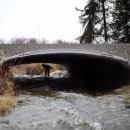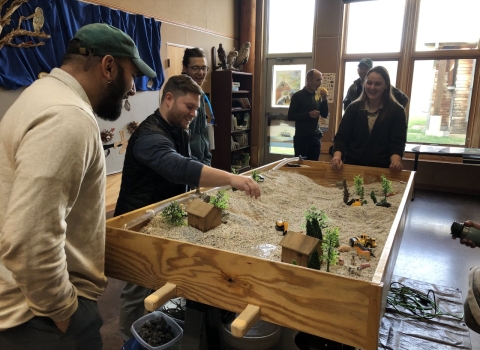We work with others in Vermont and New York to protect and restore fish and wildlife, and their habitats throughout the Lake Champlain, Connecticut River, and Hudson River watersheds.
What We Do
Our goals are to improve the health of our lakes and rivers, and to increase the distribution and abundance of ecologically and economically important fish and wildlife.
- We restore the health of our rivers, wetlands, and upland areas for fish and wildlife.
- We help local farmers improve their lands for wildlife, water quality, and sustainable agriculture.
- We help restore aquatic connectivity to our rivers and their tributaries. And we help build roads that are resilient to flooding.
- We assess parasitic sea lamprey populations and strategically control the spread of the invasive species invasive species
An invasive species is any plant or animal that has spread or been introduced into a new area where they are, or could, cause harm to the environment, economy, or human, animal, or plant health. Their unwelcome presence can destroy ecosystems and cost millions of dollars.
Learn more about invasive species to prevent its devastating effect on native fish. - We assess fish populations, conduct research, and work with hatcheries to evaluate the effectiveness of stocking and other conservation actions to restore land-locked Atlantic salmon and other priority fish species.
Sea Lamprey Control in Lake Champlain Basin
Fisheries Restoration in Lake Champlain Basin
Our Organization
Projects and Research
Across the landscape, undersized, aging and improperly placed road-stream crossings create barriers in our rivers, streams, and tidal wetlands. These structures fragment aquatic habitat and prevent or greatly reduce the ability of aquatic species to move freely to migrate, feed, and reproduce. These poorly designed structures are also more prone to clogging, causing flooding, and washing out...










